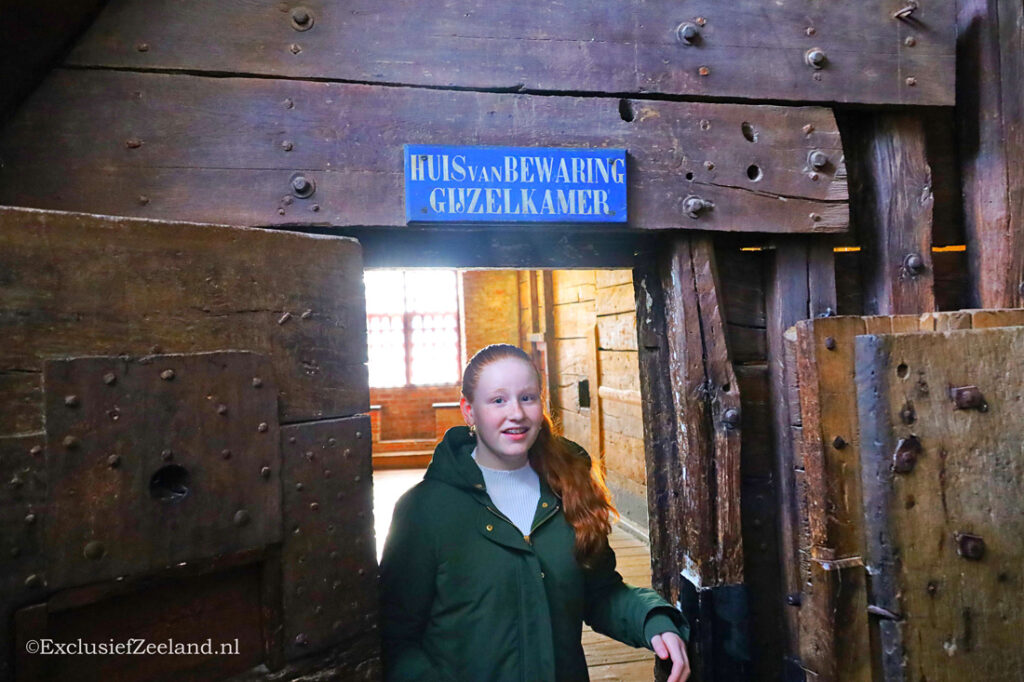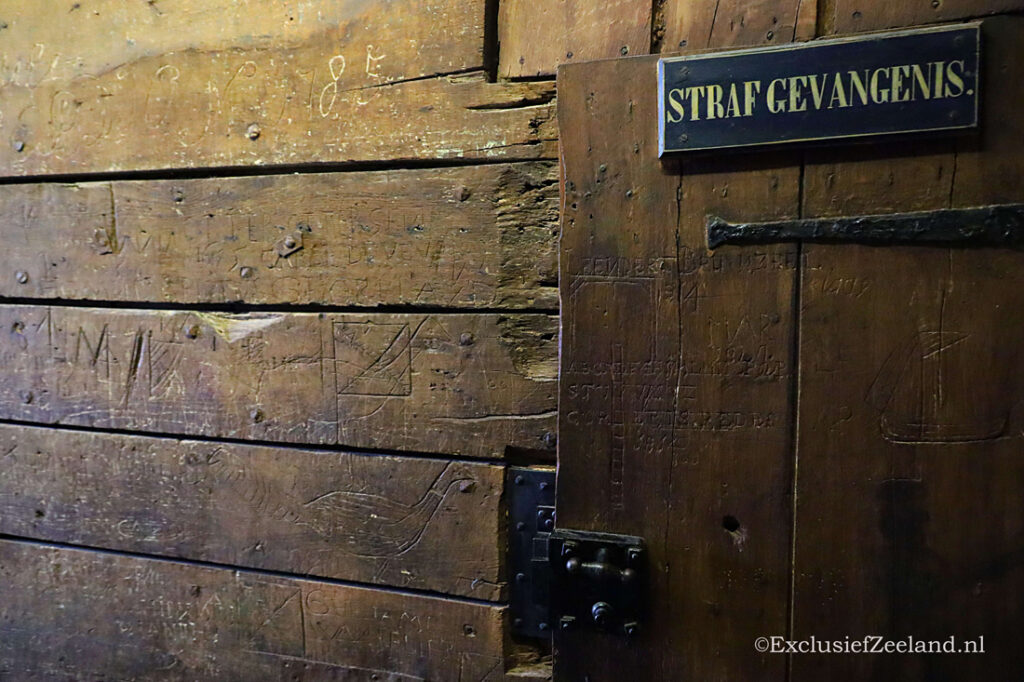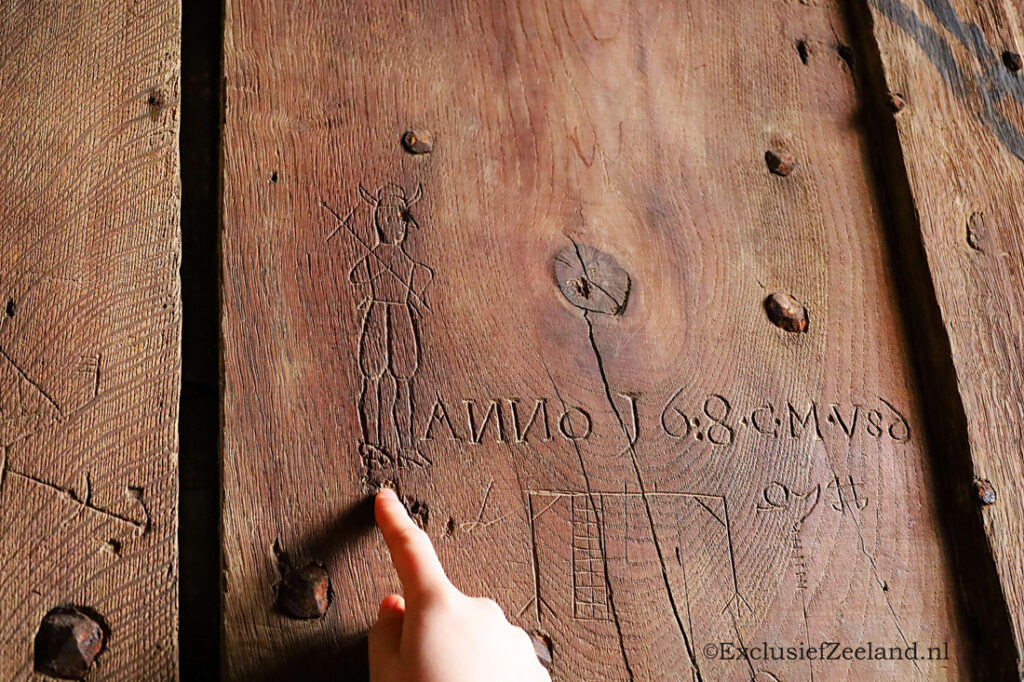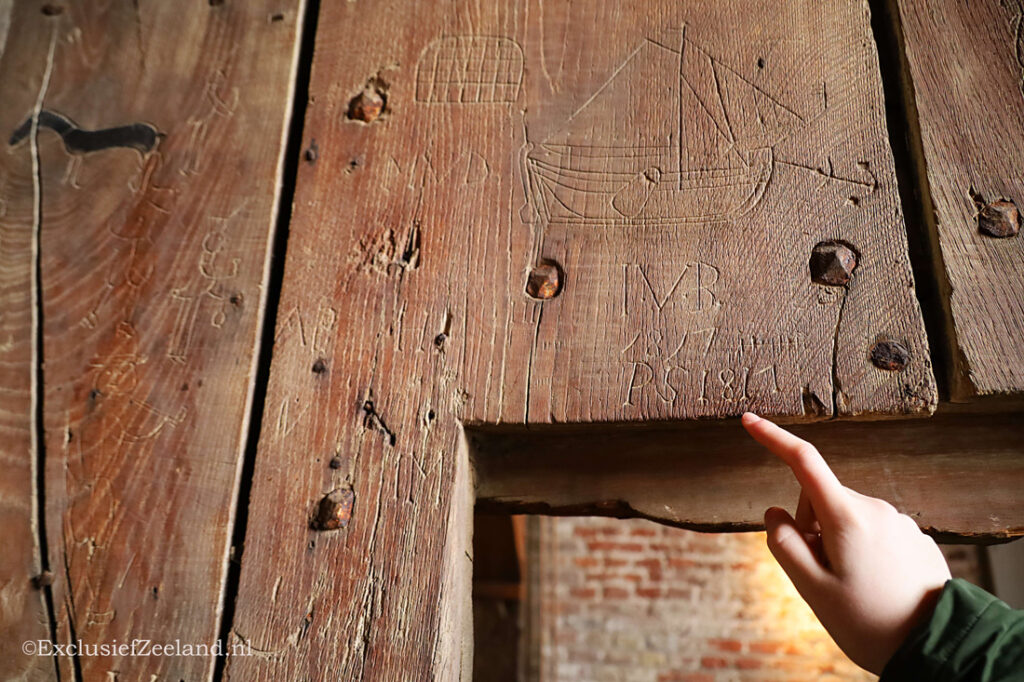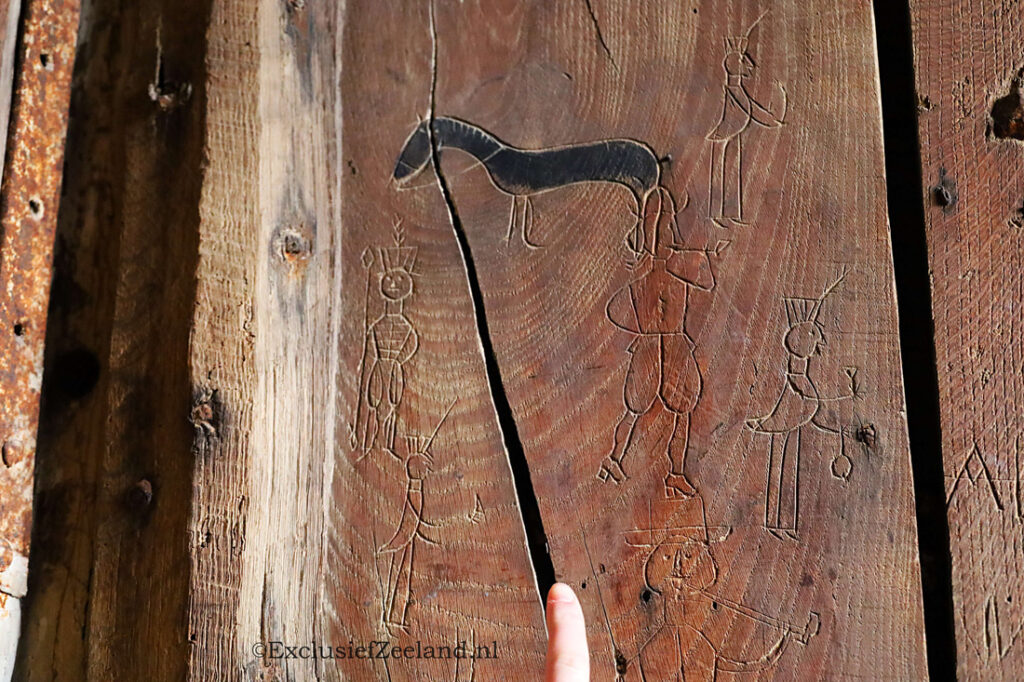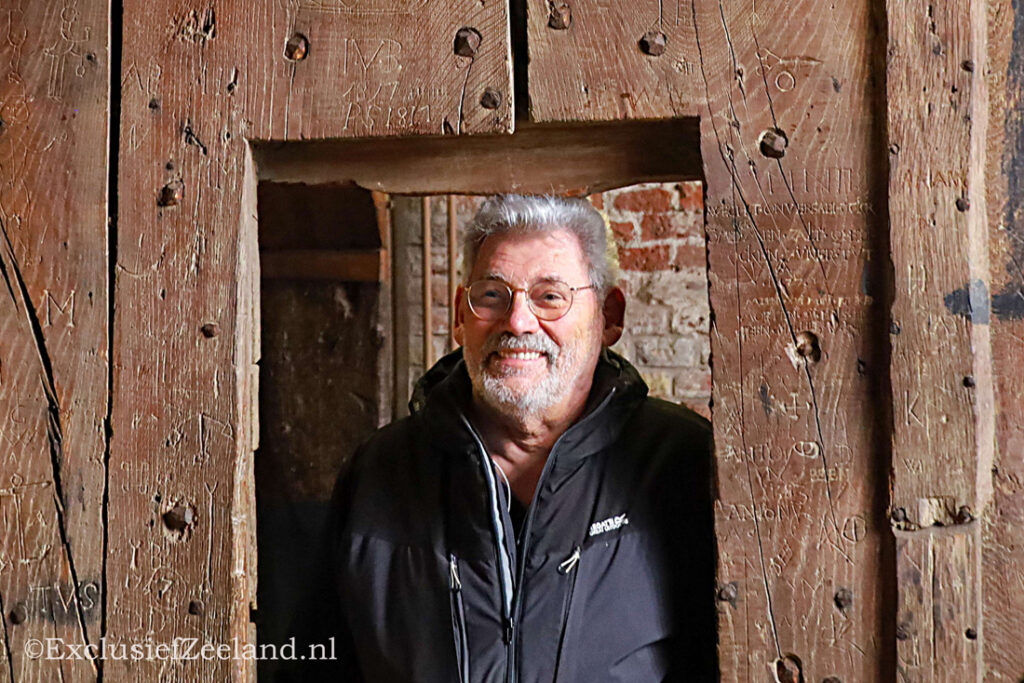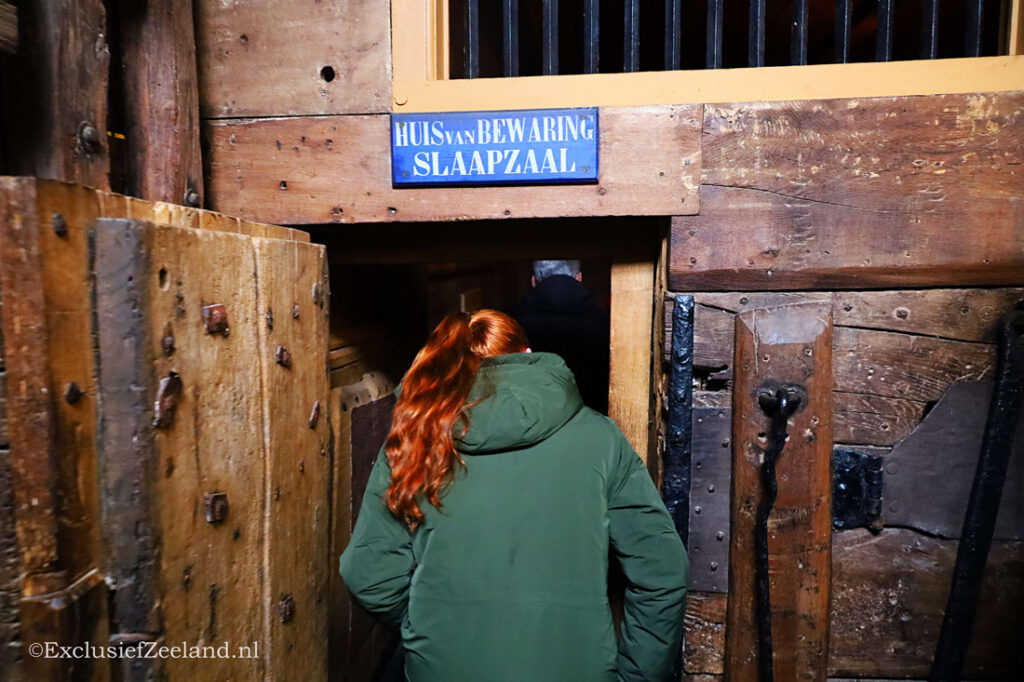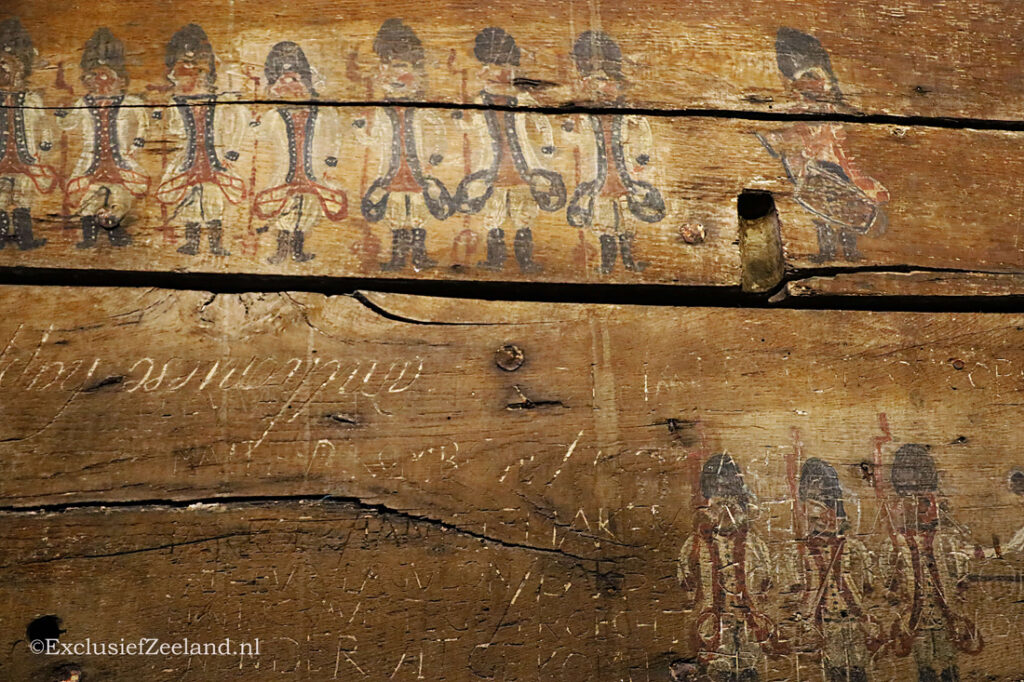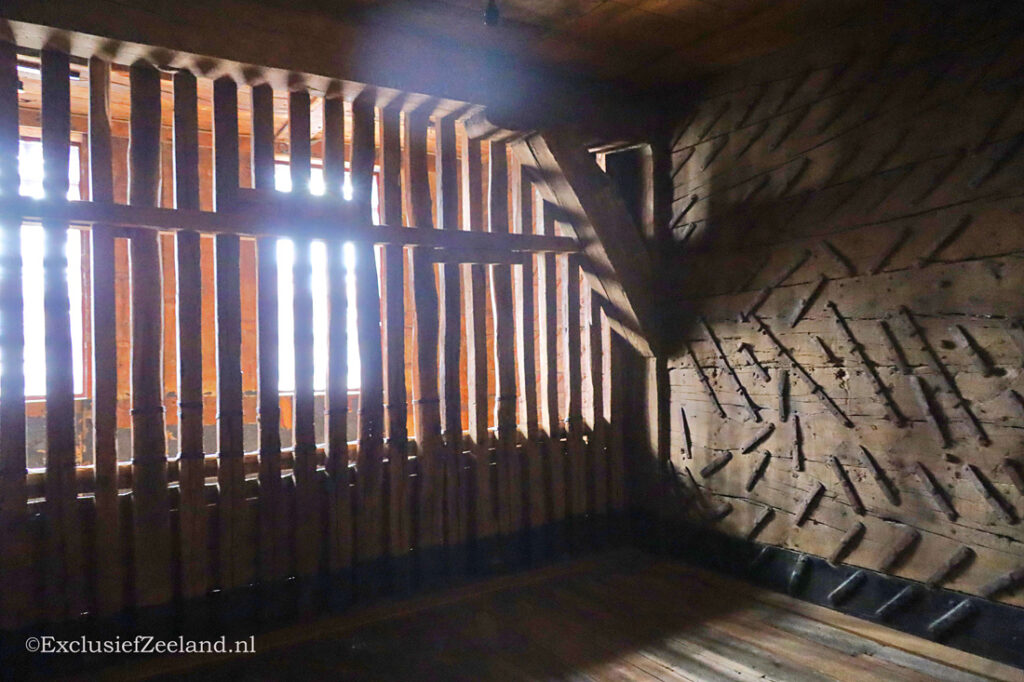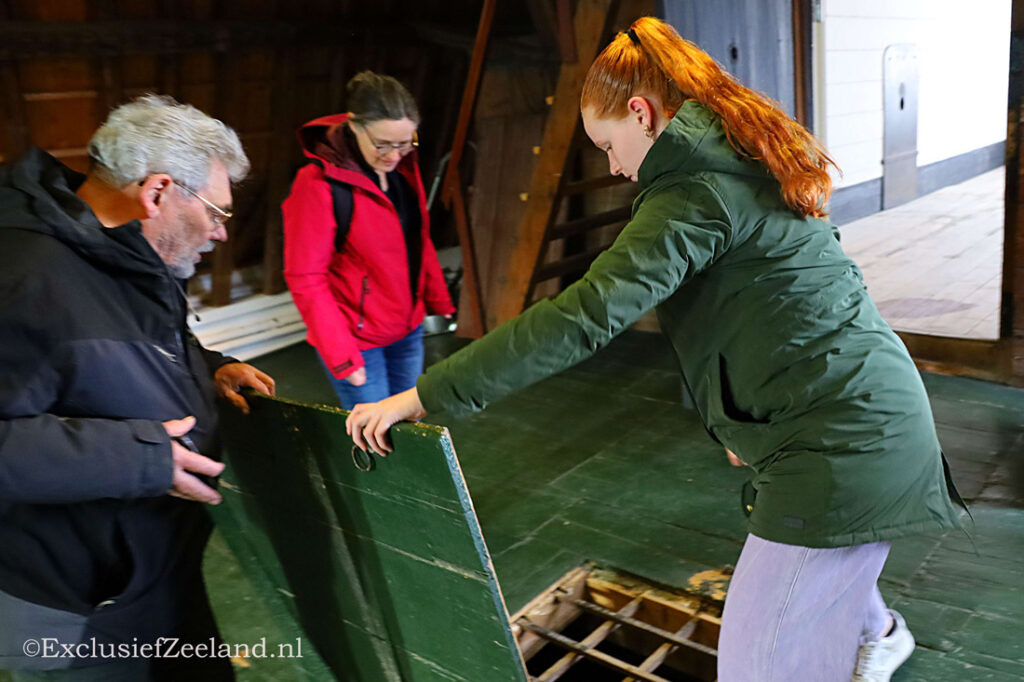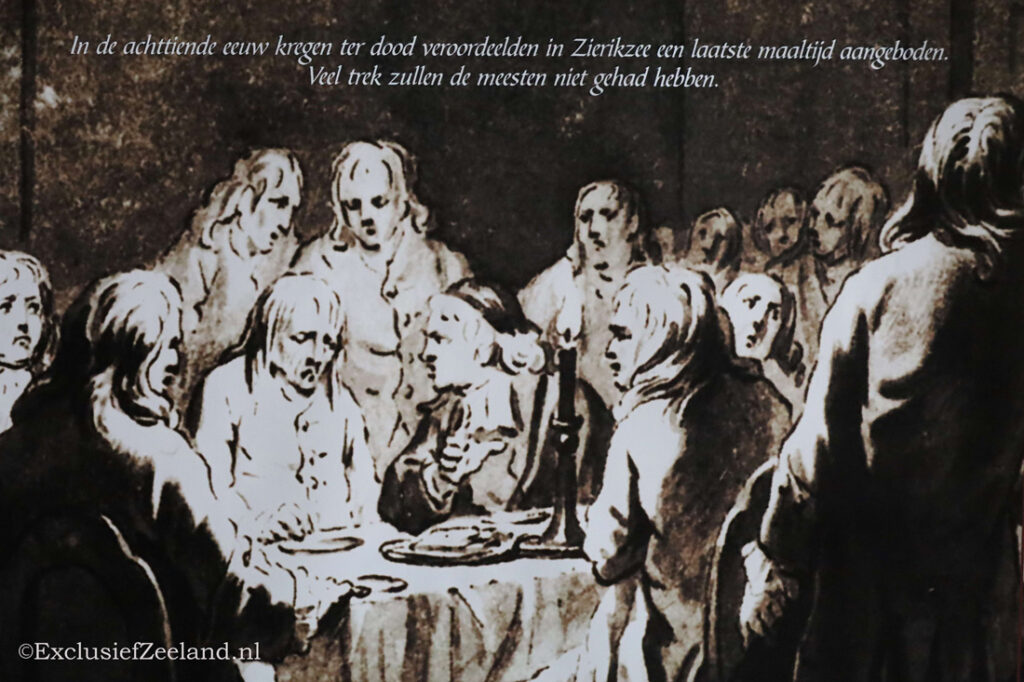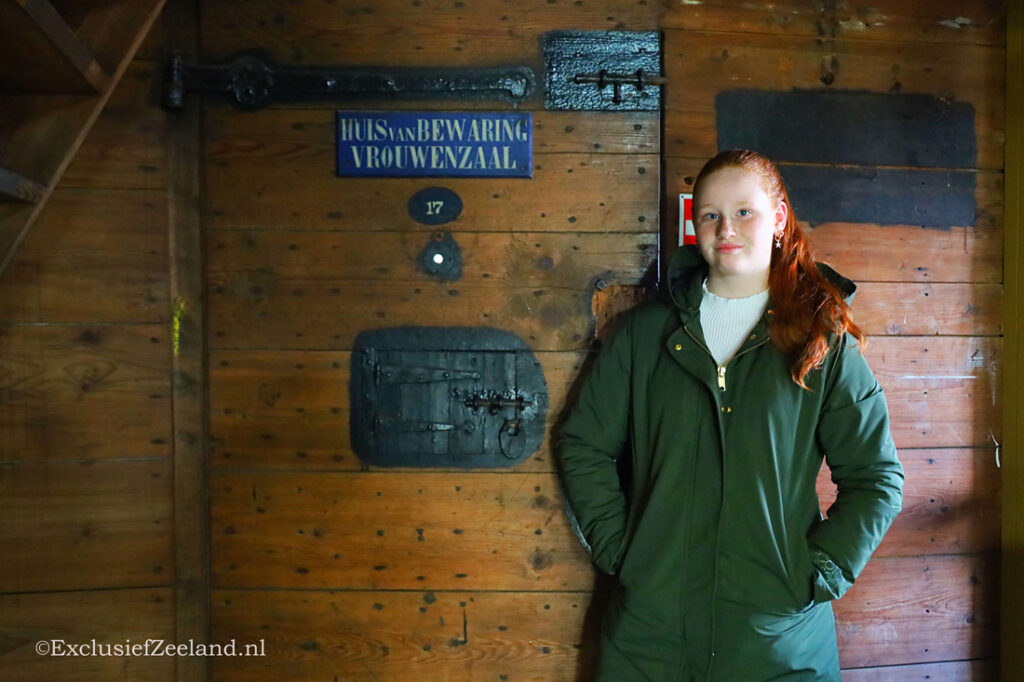We gather at the Town Hall Museum and walk past Zierikzee’s oldest house (1425) via the city’s highest point towards the former market square. The stepped gable with wrought-iron ornamental anchors and striking lattice baskets in front of the windows suggest a distinguished building. Entering Gravensteen, we do so via the springboard to the scaffold. What a sinister idea that convicts walked over the same stones as we do now but that for them it was the very last steps. Until 1739, it was even popular entertainment to attend a hanging and that is exactly why the heaviest punishment was carried out on Thursday(market day) or Saturday so that the hanging was assured of audience.
Pete takes us into the world shop now housed in Gravensteen. At the back of the room, we see a door that captures the imagination. For a moment it seems logical that Dumbledore himself will open the door but Pete turns out to be a good stand in. Directly behind the door is a wooden twisted staircase that feels very unstable because the steps are hugely worn. How many people would have gone before us in all these years? What would they have looked like and with how much stress would they have walked up these stairs?
Upstairs, we see the hostage room, the isolation cell but also the punishment room and the sick room. Impressed, we look at the rooms and cannot help but look fascinated at the names and drawings carved into the oak walls. In the hostage room, Pete tells us that at the time, around 40 people were crammed into this small room waiting for their trial. In the corner is a pot that was no doubt the source of an air that mingled with the smell of sweat, testosterone and adrenaline. Perhaps it’s a good thing there was no glass in the window frames back then. Although the weather conditions will undeniably have provided additional challenges. The room next door is the punishment room and provided the backdrop for the torture scenes from the film “Michiel de Ruyter”.
Torture was also done here. Pete confides to us that some torture implements have been preserved in the basement of this historic building. This sinister part of the prison is closed to the public, which is perhaps just as well. Our imagination needs little help from reality. It reminds me that I read that paranormal activity was investigated here in Gravensteen in 2013. Two orbs (unexplained light sources) were captured in photographs. They could have been entities according to the investigators. But three voices were also captured on EVP (Electronic Voice Phenomena). Enough information to get the jitters and give strength to any legend.
Around 1630, the prison was embellished by the first Dunkirk Kapers captured by the Zeelanders. Seamen in colourful uniforms formed an interesting contrast to the usual scum who were detained. The wall drawings clearly show what these sailors must have looked like. They also proved particularly useful as they could be exchanged for captured Zeeland sailors.
Over a century later, perhaps Gravensteen’s most famous prisoner was added to its impressive history. It was during Pentecost in 1777 when a vulgar pub brawl got completely out of hand. Innkeeper Flip Dito even requested assistance from the authority. When the policeman arrived on the scene (called onderschout in those days), he threw 33-year-old Jan Machielse van der Made Rap to the ground, better known as fisherman Jan Rap. In the fierce struggle that followed, Jan stabbed the onderschout in the leg. Less than three hours later, the poor man lost his life and Jan had a murder of a policeman on his conscience. He was sentenced to death but this was later commuted to branding and banishment from Holland, Zeeland and West Friesland. His failure to comply with the banishment cost him his head 10 years later. Indeed, on 7 May 1789, he was again sentenced to the gallows. His body was later hung on the outer gallows in the gallows polder as bait for the birds. Even today, the expression “Jan Rap and his mate” is used to denote seedy types. His fame unfortunately did him little good himself.
Stories of the past that come alive and capture our imagination is a souvenir that costs little but is very valuable. The tour only takes an hour but certainly provides a couple of hours of conversation. Great for on one of the terraces in Zierikzee which are also more than worthwhile. Absolutely recommended for young and old alike! For more information https://exclusiefzeeland.nl/en/blog-en/gravensteen-3/
Love,
Anna


